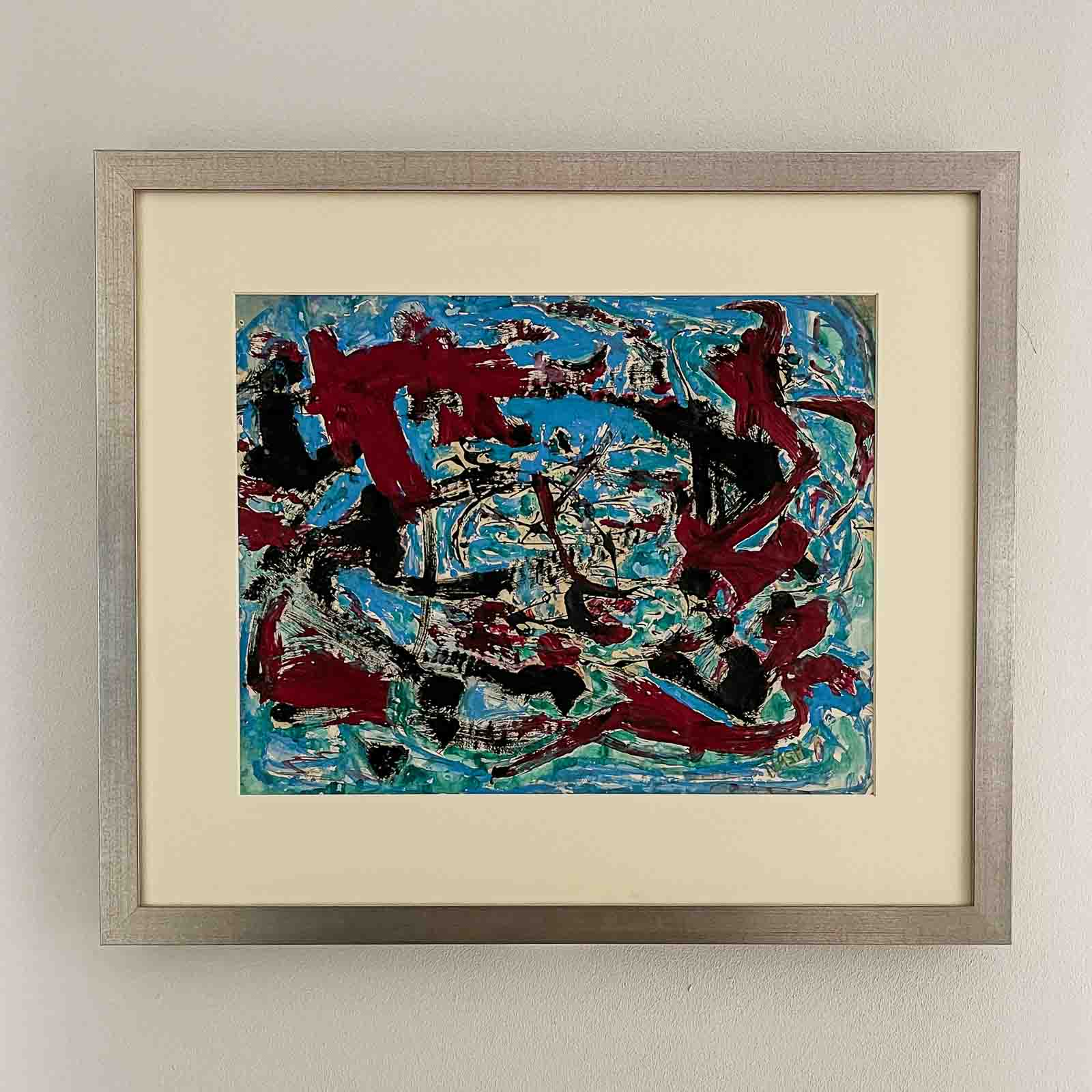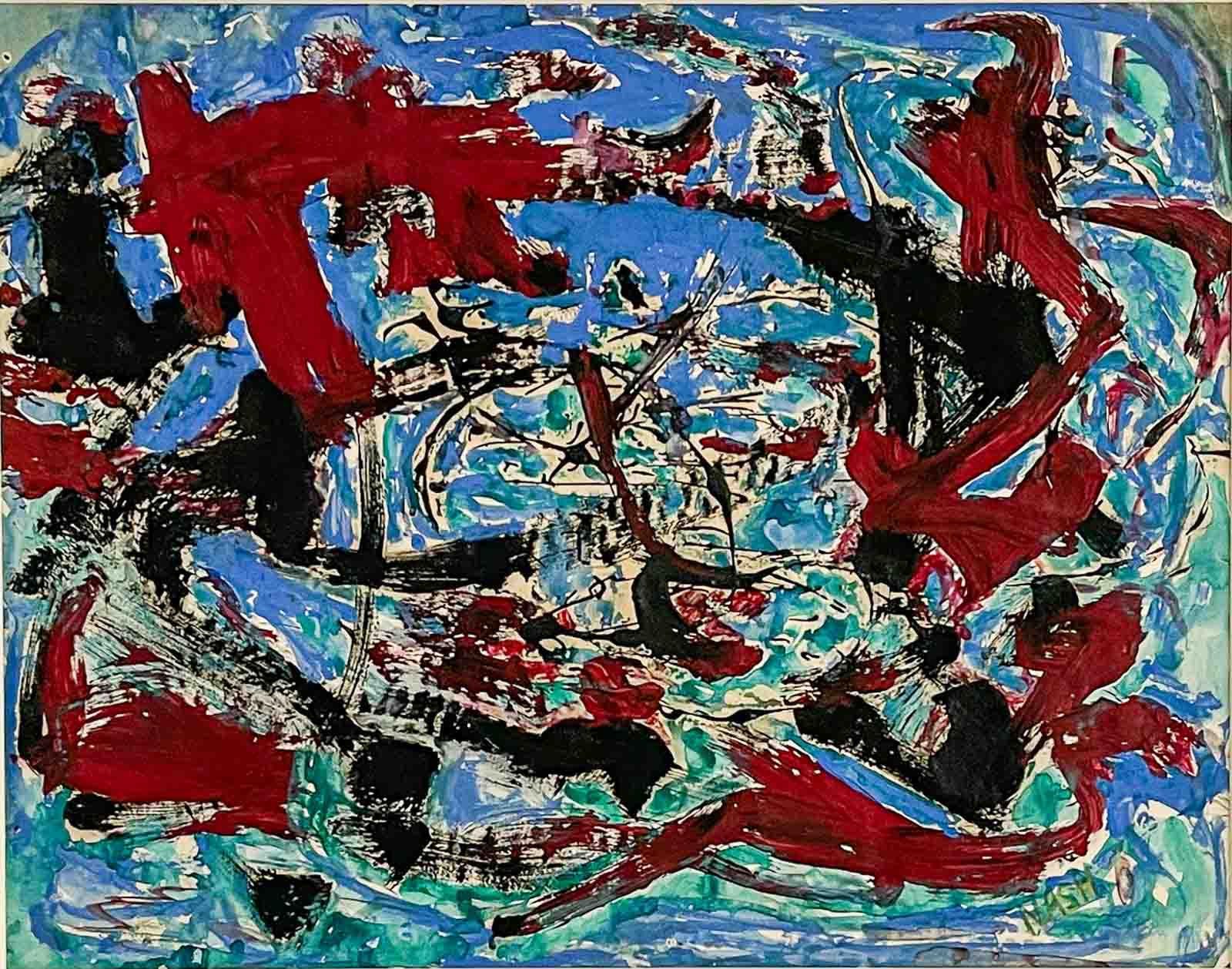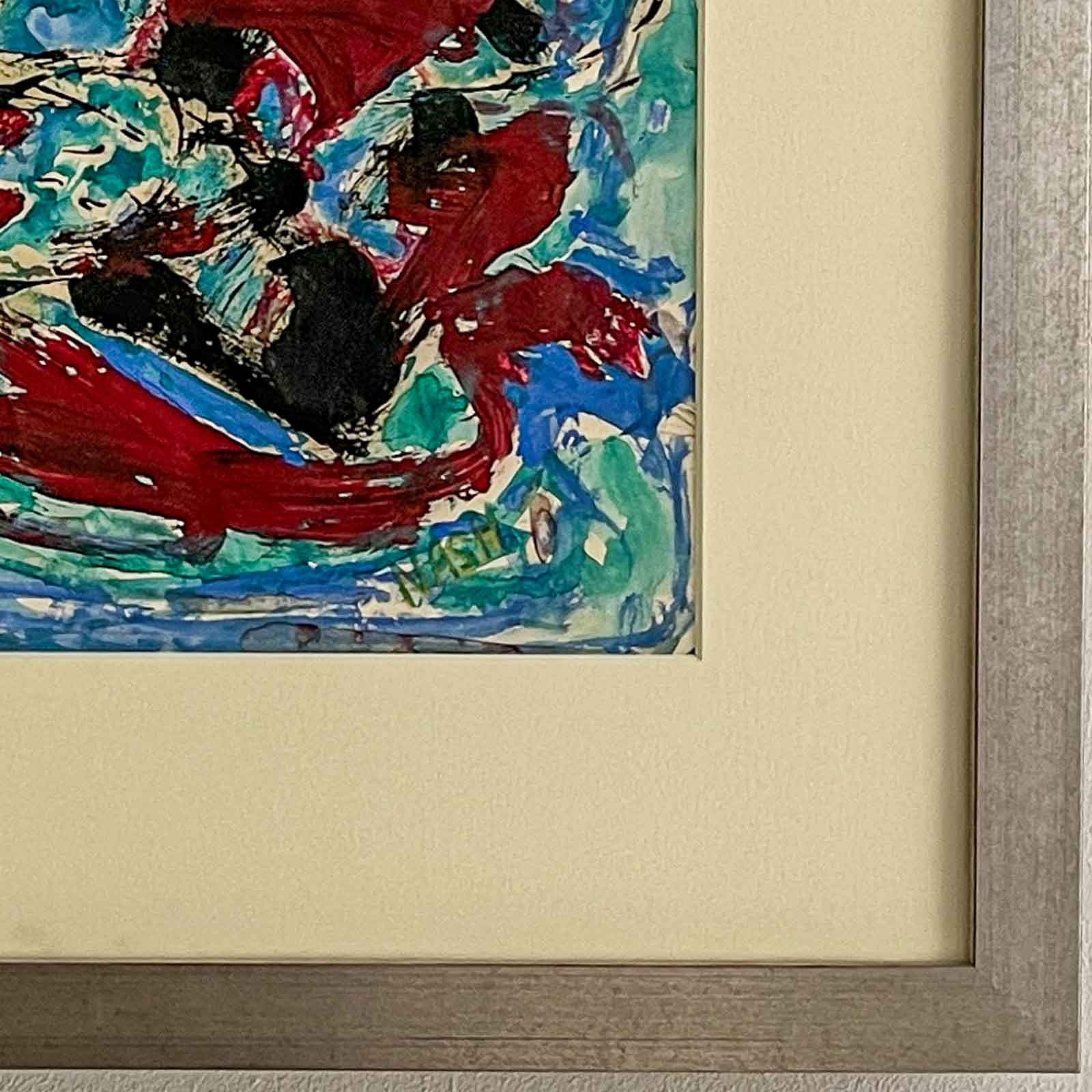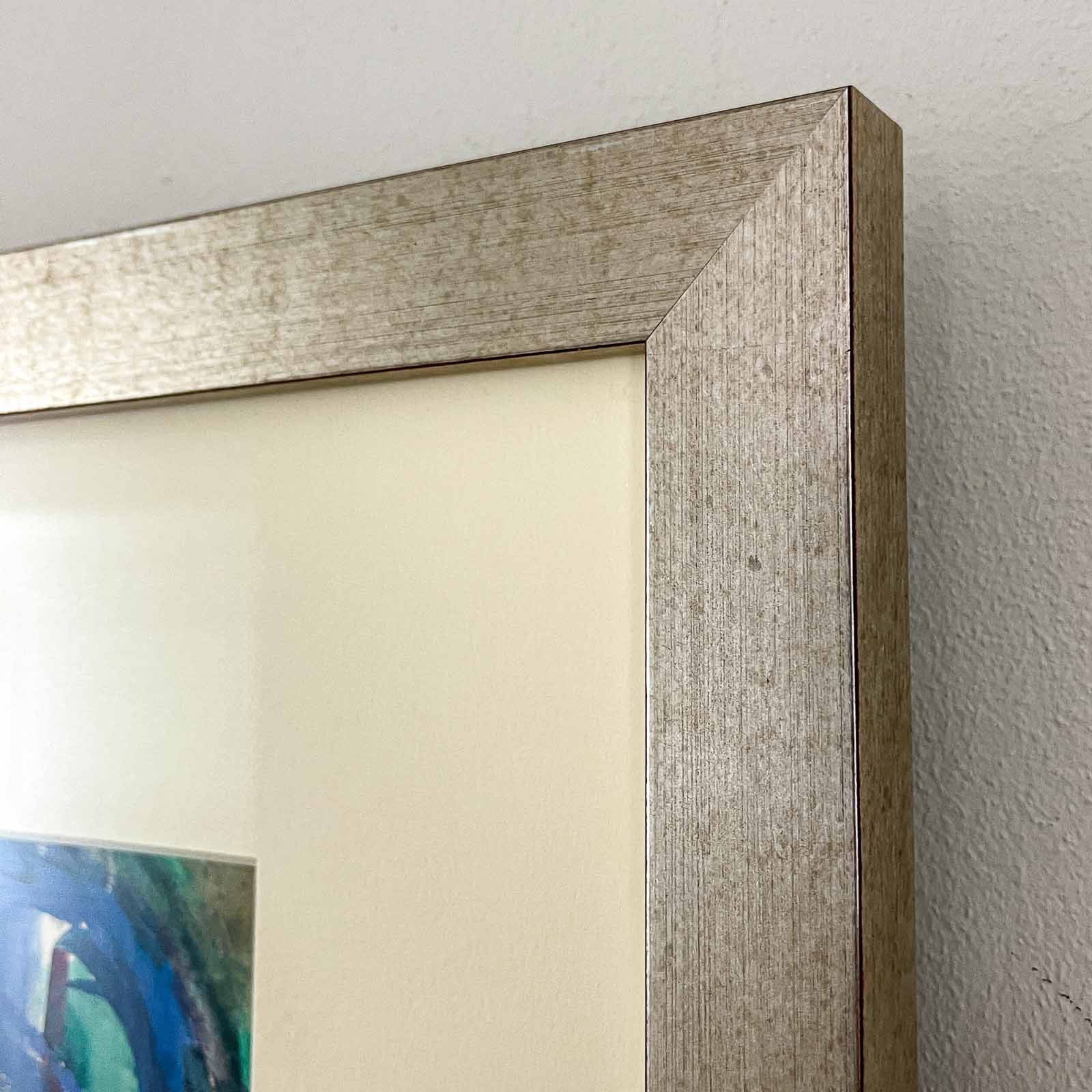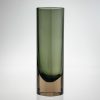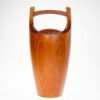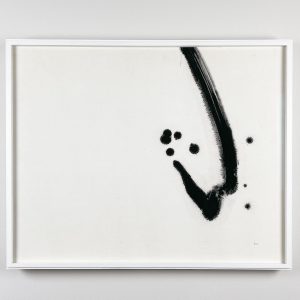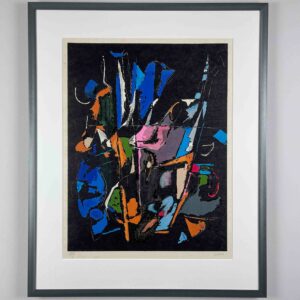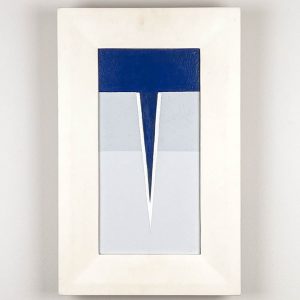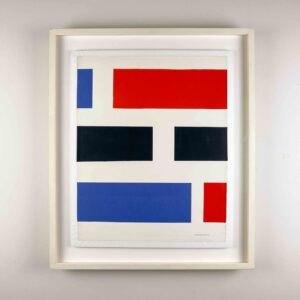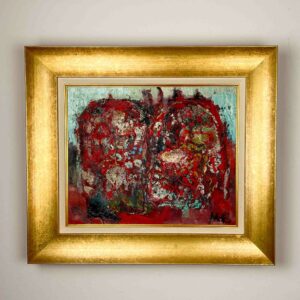| Signed | Signed "Nash" front, bottom-right |
|---|---|
| Condition | Good original condition, some minor crackles. Professionally framed. |
| Provenance | Private collection Denmark |
| Dimensions | Artwork Frame |
Jørgen Nash – “La Danse”, 1960’s – Gouache and aquarelle on paper, professionally framed, museumglass
SOLD
Out of stock
An original artwork by Danish artist Jørgen Nash, most likely painted in the 1960’s.
Signed by the artist (front, bottom right). This artwork was inspired by “La Danse” by the French artist Henry Matisse, painted in 1909 that is now in the collection of the Musum of Modern Art in New York. Although Nash’s version is completely abstracted, as opposed to the original, the movement and use of colours are clearly related.
Professionally framed in a silverplated, wooden frame, passepartout and museumglass.
About Jørgen Nash
Jørgen Nash born Jørgen Axel Jørgensen (Vejrum 1920 – Copenhagen 2004) was a Danish painter, writer, poet and situationist activist. Born in the small town of Vejrum on Jutland in Denmark Jørgen Nash grew up in a devout Christian family as one of six children. One of his older siblings was Asger Jorn, who’s greater fame brought him to change his family name to Nash.
Like his brother he studied at the Royal Danish Academy of Fine Arts in Copenhagen (Det Kongelige Danske Kunstakademi). During the second World War the two brothers were heavily involved in the resistance movement. Nash was arrested twice by the Germans and eventually had to flee to Neutral Sweden.
Between 1947 and 1951 Nash was a member of the CoBrA movement, the most important international avant-garde movement in art in Europe immediately after the Second World War.
In the late 1950’s Nash joined the Situationist International, an international organization of social revolutionaries made up of avant-garde artists, intellectuals, and political theorists.
In the 1960’s Nash became a famous provocateur, authoring many happenings and Situationist acts. The best known of those was the decapitation of the bronze sculpture of “The Little Mermaid” in Copenhagen harbour in april 1964.
Many of Jørgen Nash’s works are part of the collections of International Museums and (private) collections like The Museum of Modern Art, New York City, Centre Pompidou, Paris, Museu Dárt Contemporani, Barcelona, National Museum of Modern Art, Tokyo among others.
About Rune Hagberg
Rune Hagberg (Uppsala, Sweden 1924 – Härnösand, Sweden 2015) was a self-taught Swedish painter, writer and sculptor regarded as one of the leading figures in what is known as spontaneity and informal painting.
He was born in Uppsala in 1924, son of a railway official Sven Hagberg and Ceres Ruthström. in the late 1940’s Hagberg participated in exhibitions, wrote his first articles in the mid-1950s and was invited to exhibit in Japan as early as 1955 by a group of painters and calligraphers there.
Hagberg’s meditative Informalism is positioned between Concretism and Expressionism of the 1950s. His work reflects a persistent and consistent exploration of silence and enclosure. In his practice, he approached these states through a range of techniques rooted in painting and drawing. Deeply influenced by Zen Buddhism and the calligraphic trends of his time, he initially worked with ink on paper in large-scale works during the 1950’s.
Eventually, Hagberg’s practice came to focus on a gradual loosening of the picture surface, a kind of elimination of the sheet of paper, as if to approach the idea of nothingness. This exploration later found expression in sculptural objects.
Rune Hagberg has had a long series of exhibitions in his home country Sweden and abroad and is represented at the Magasin III Museum for Contemporary Art, Stockholm, Moderna Museet, Stockholm and Göteborgs Konstmuseum, among others.


